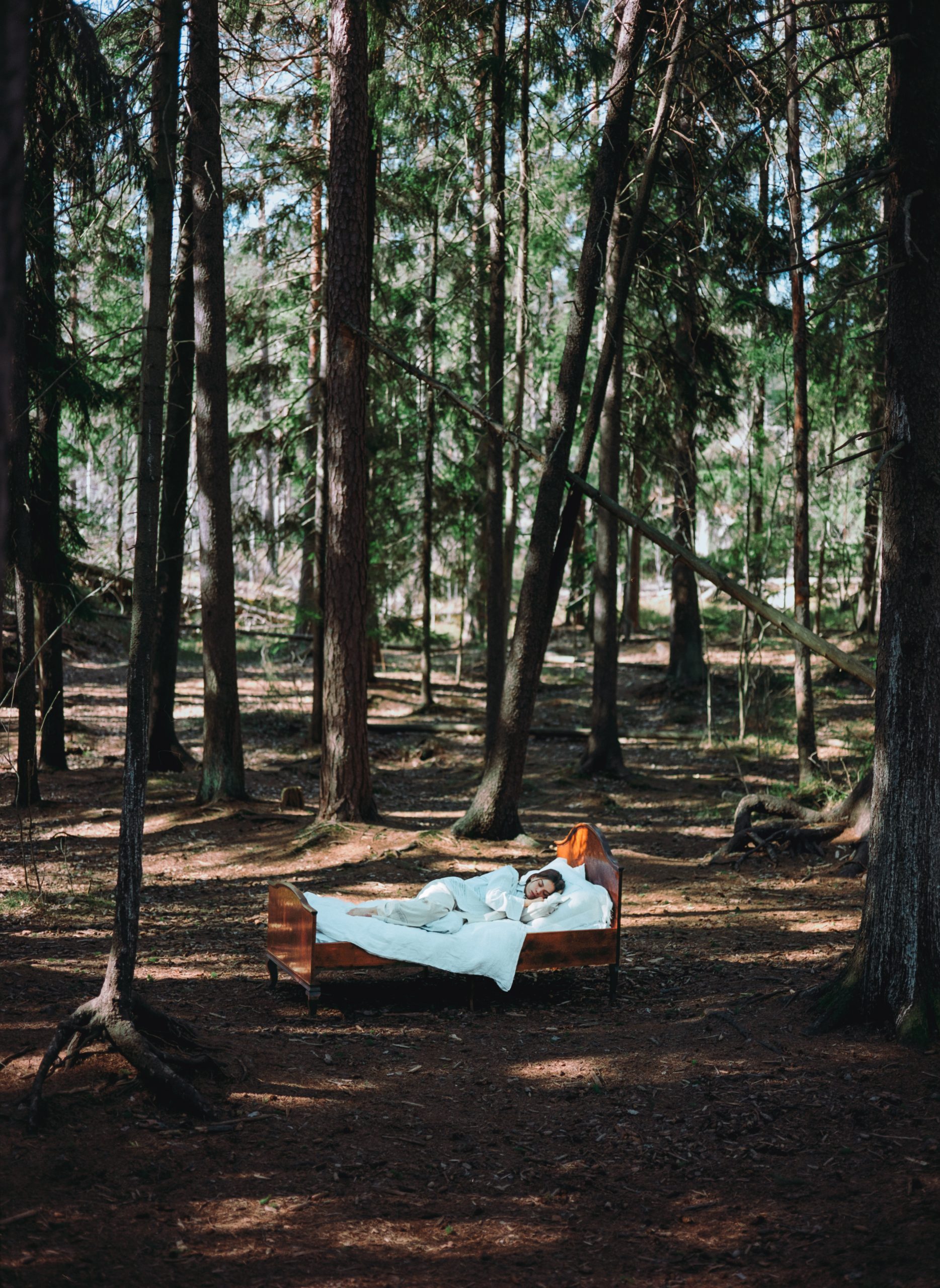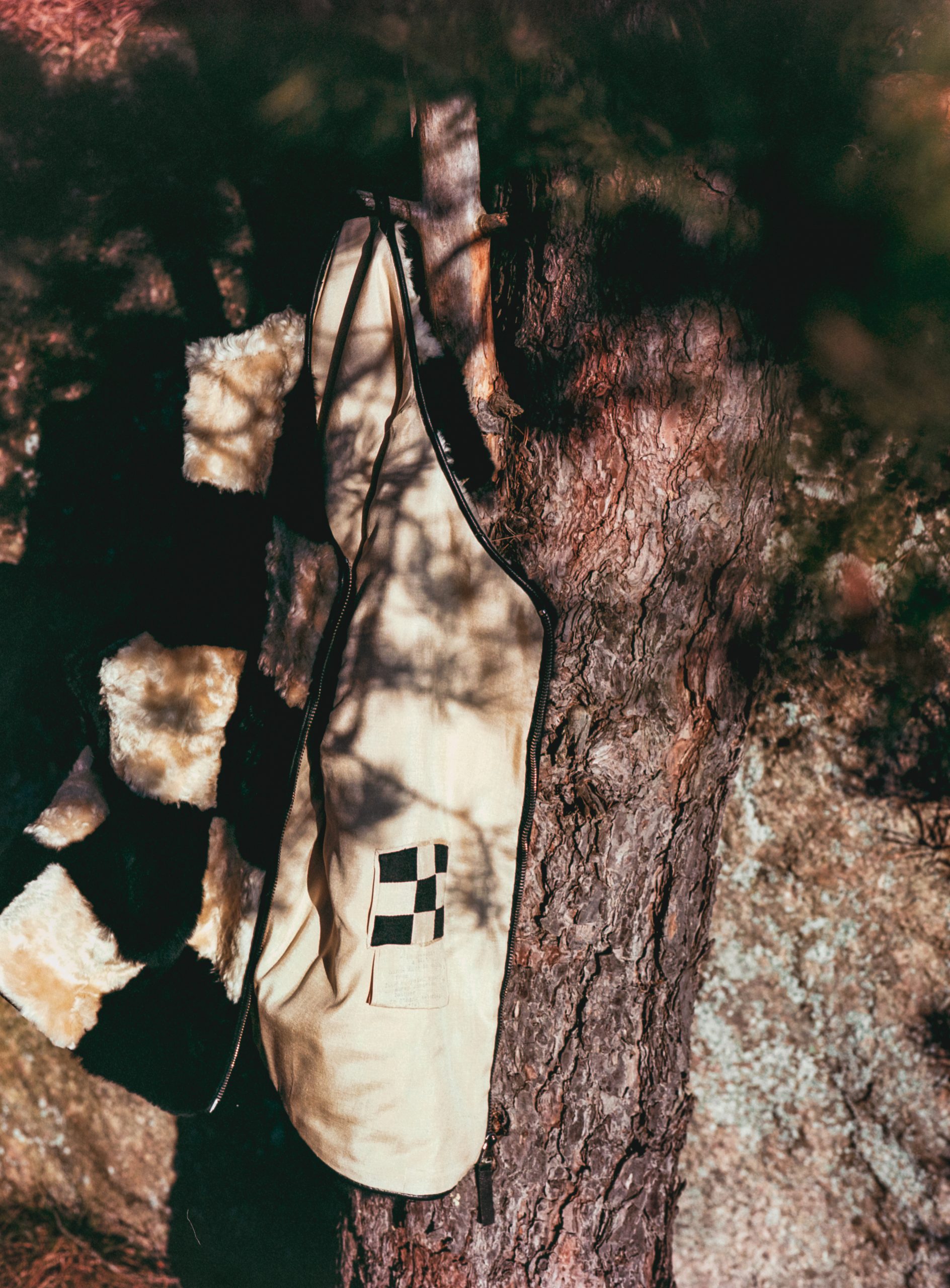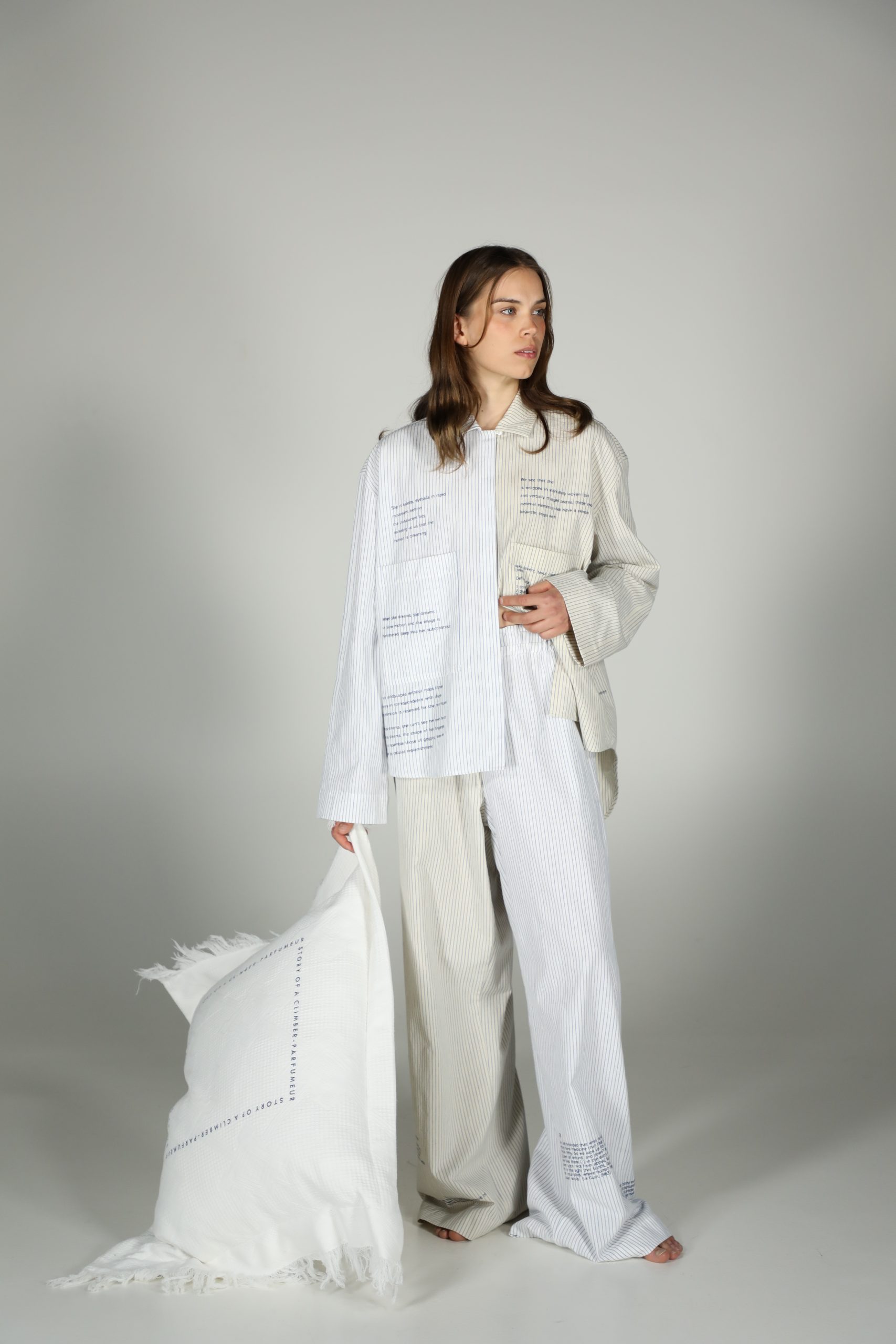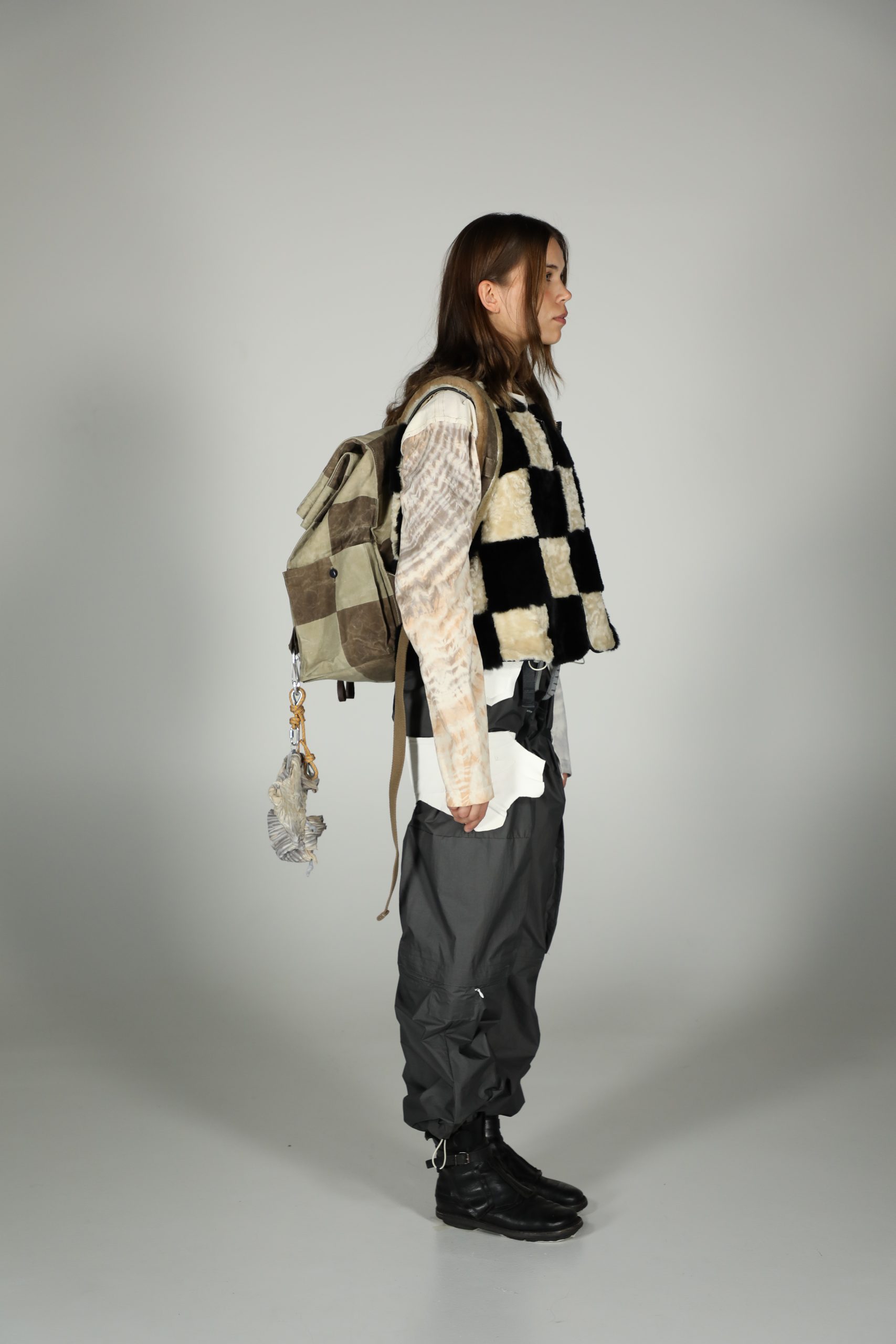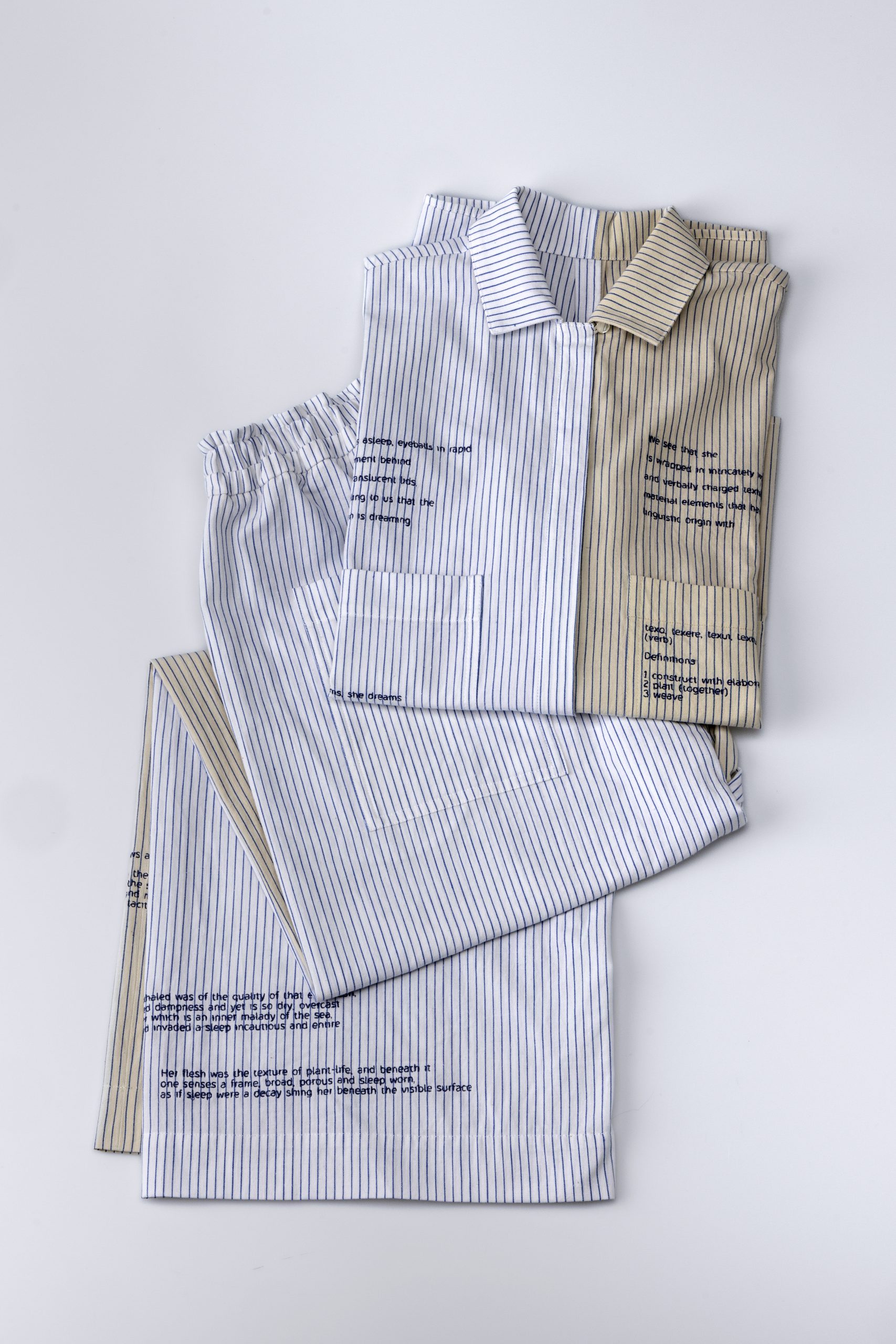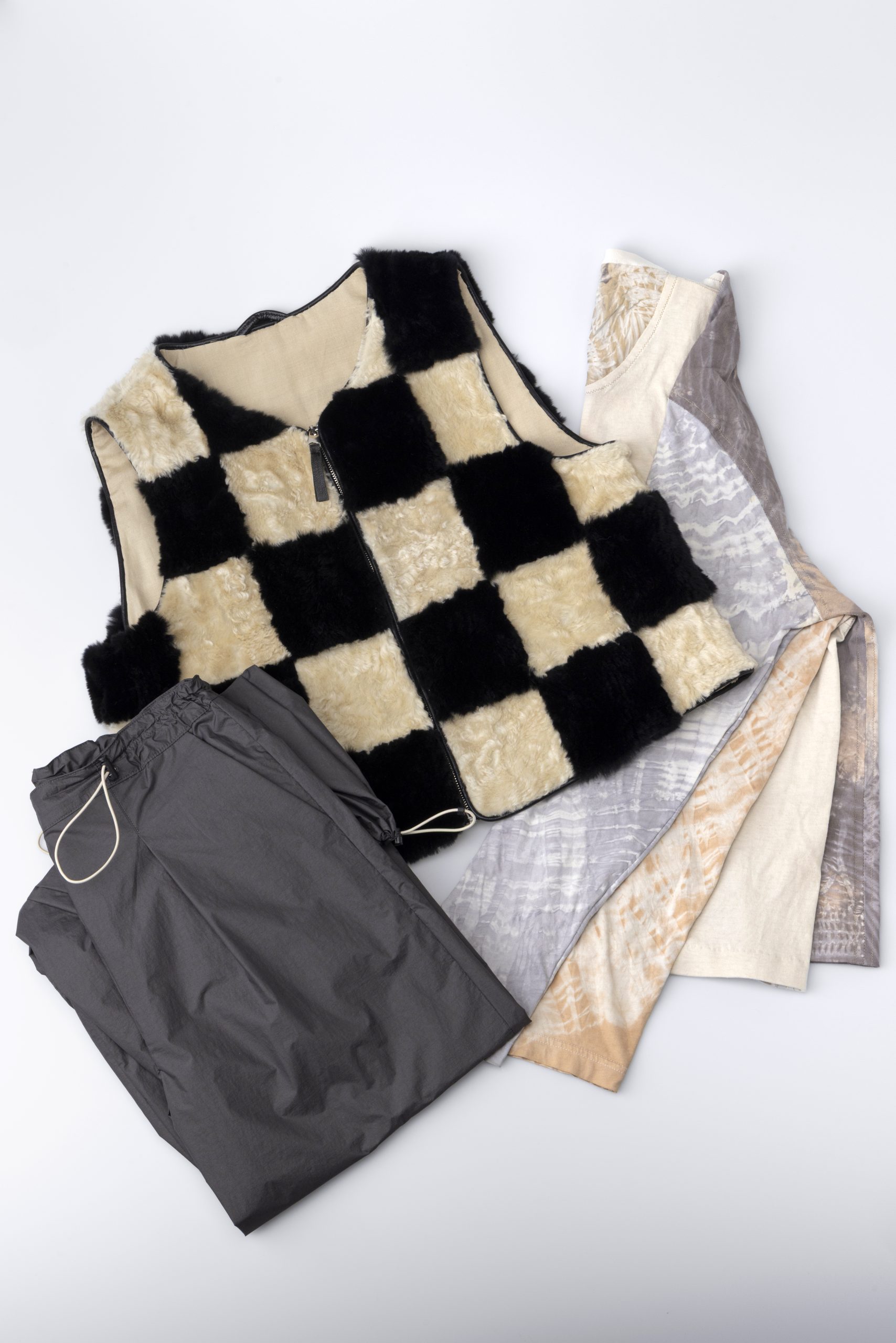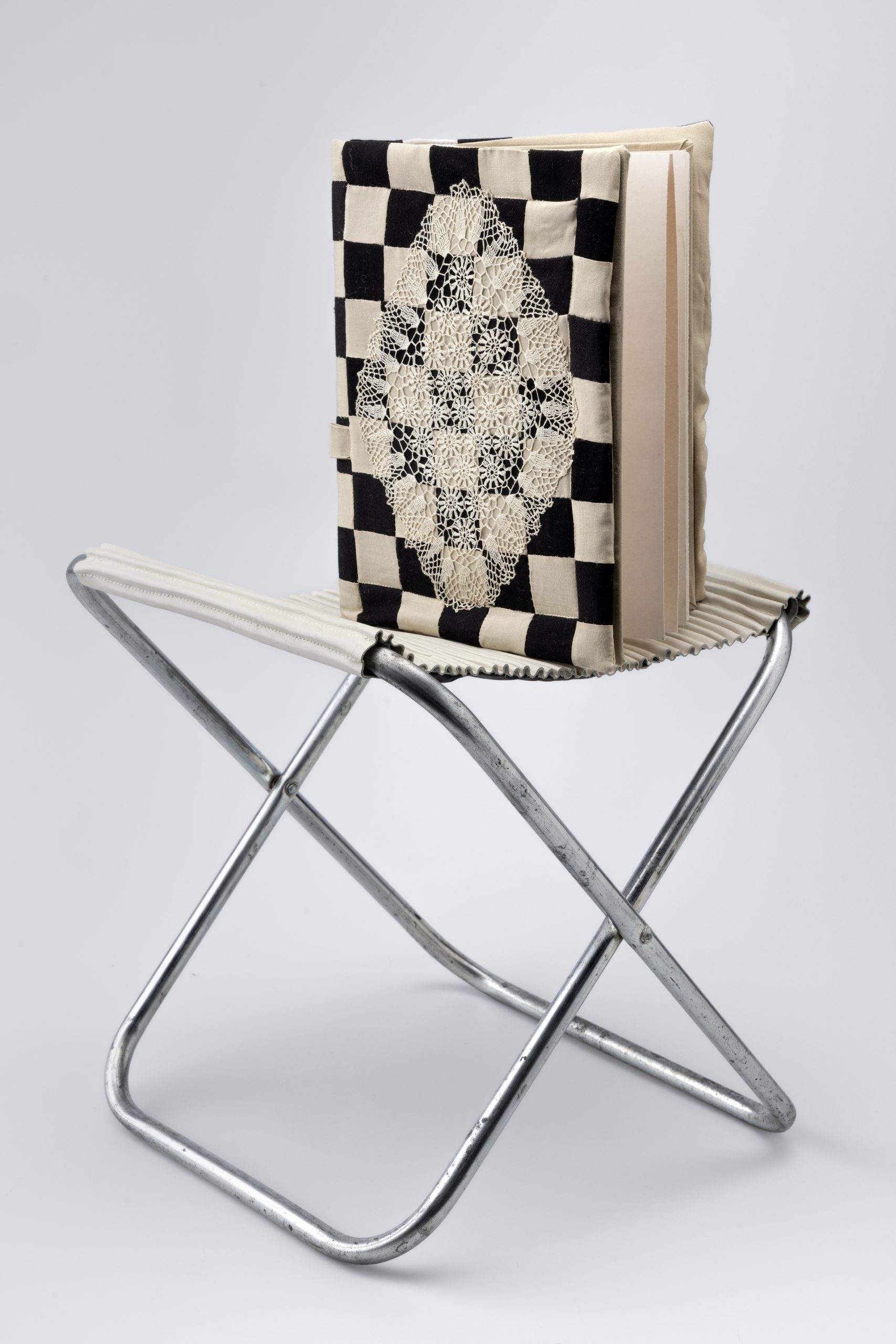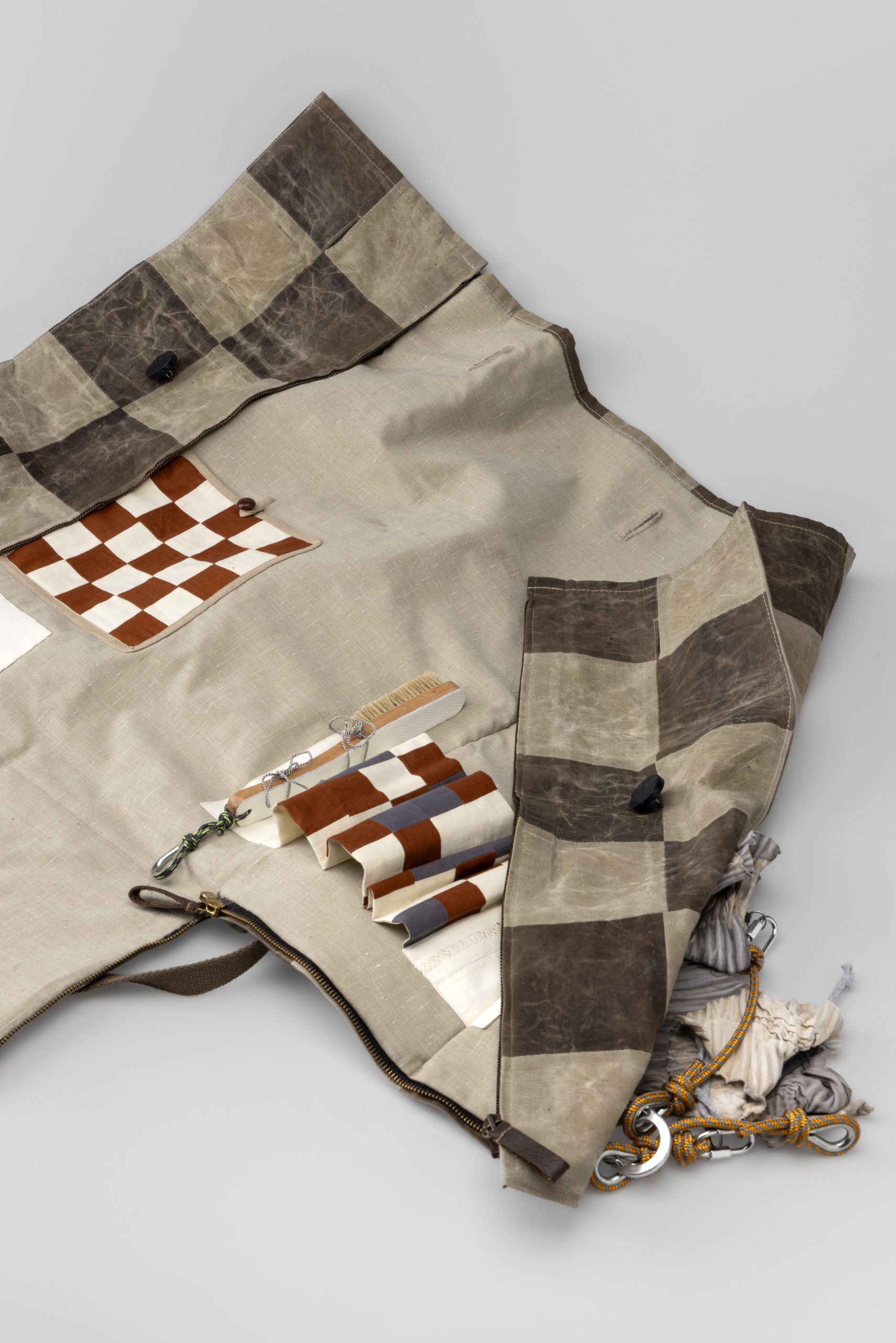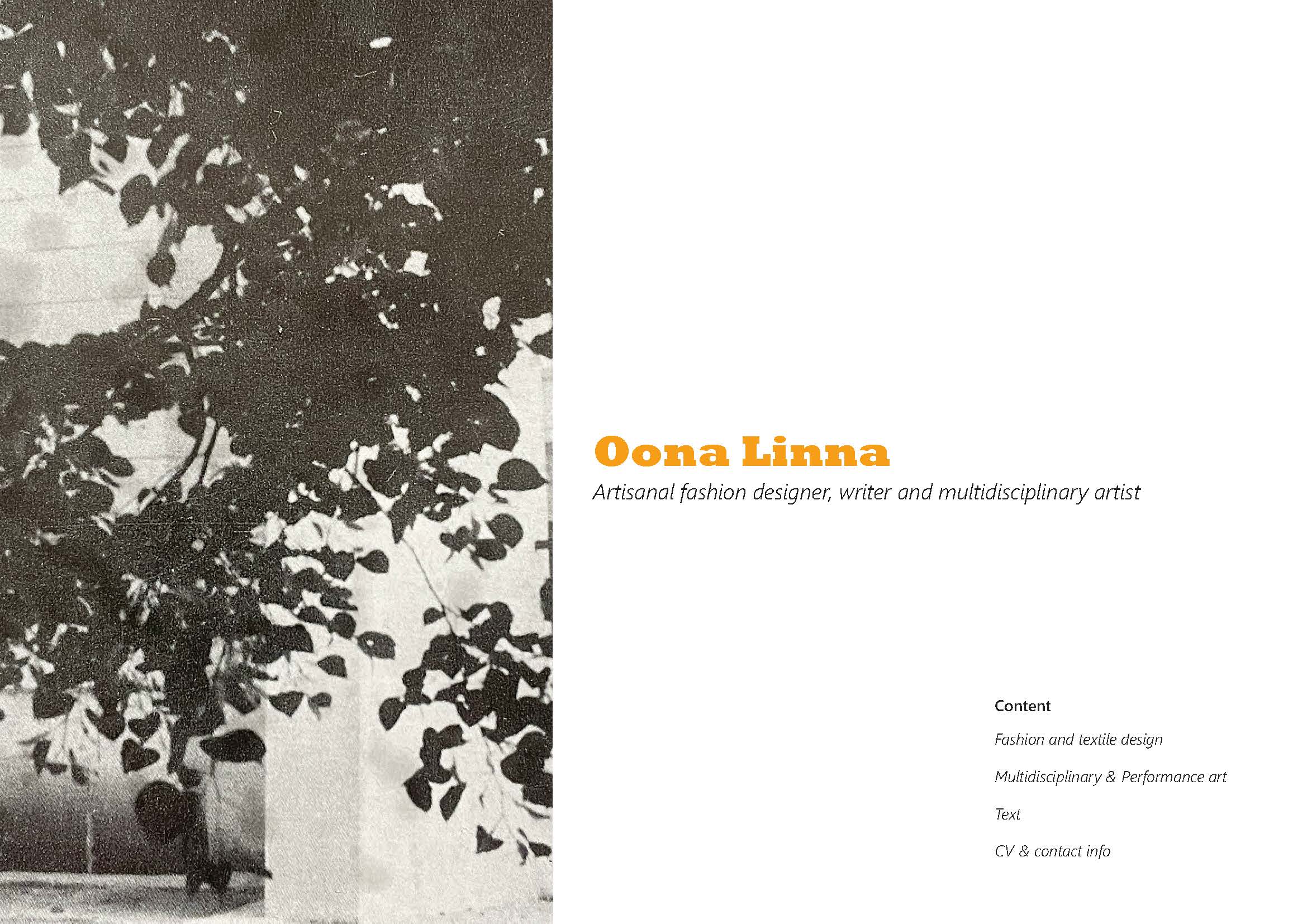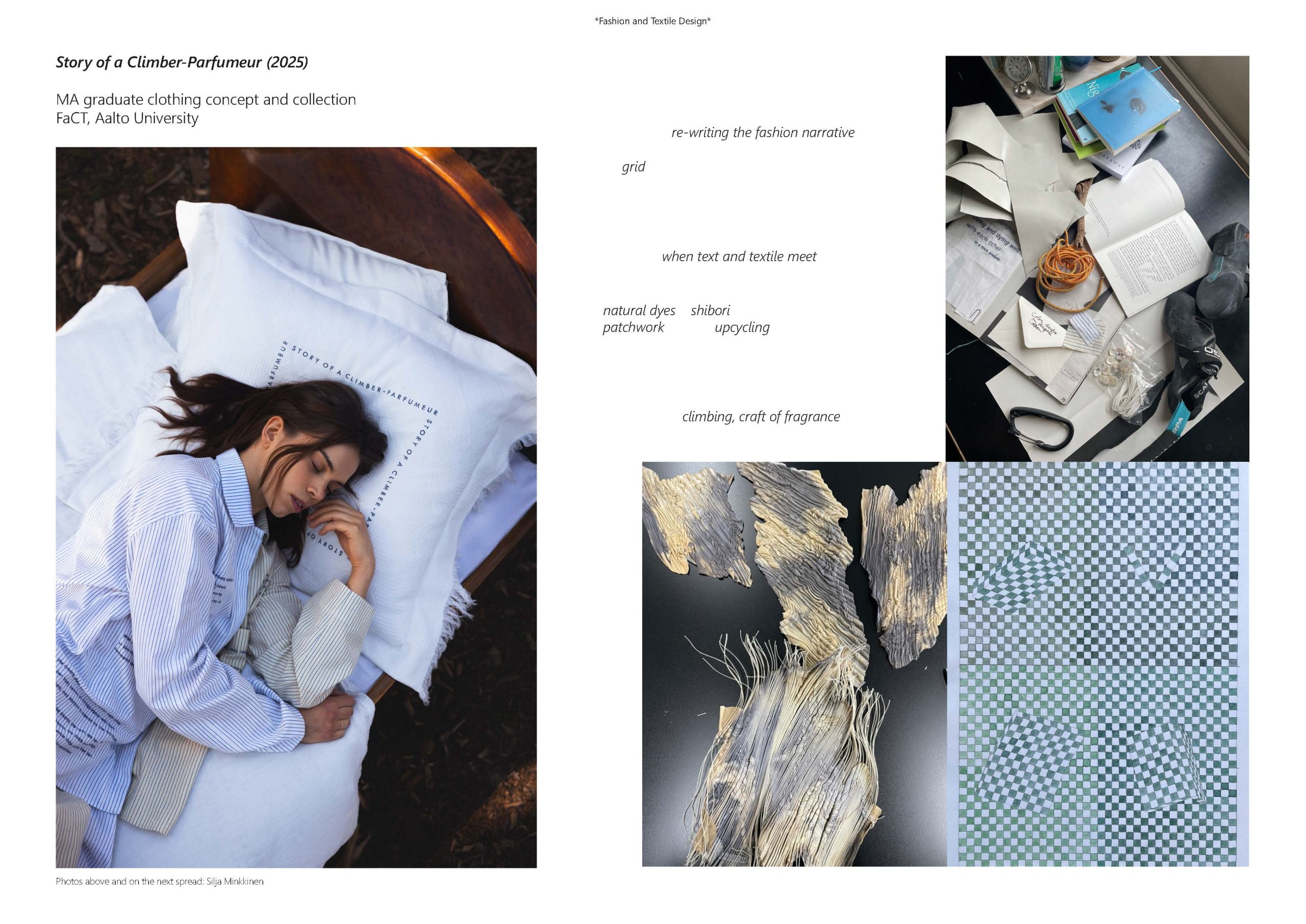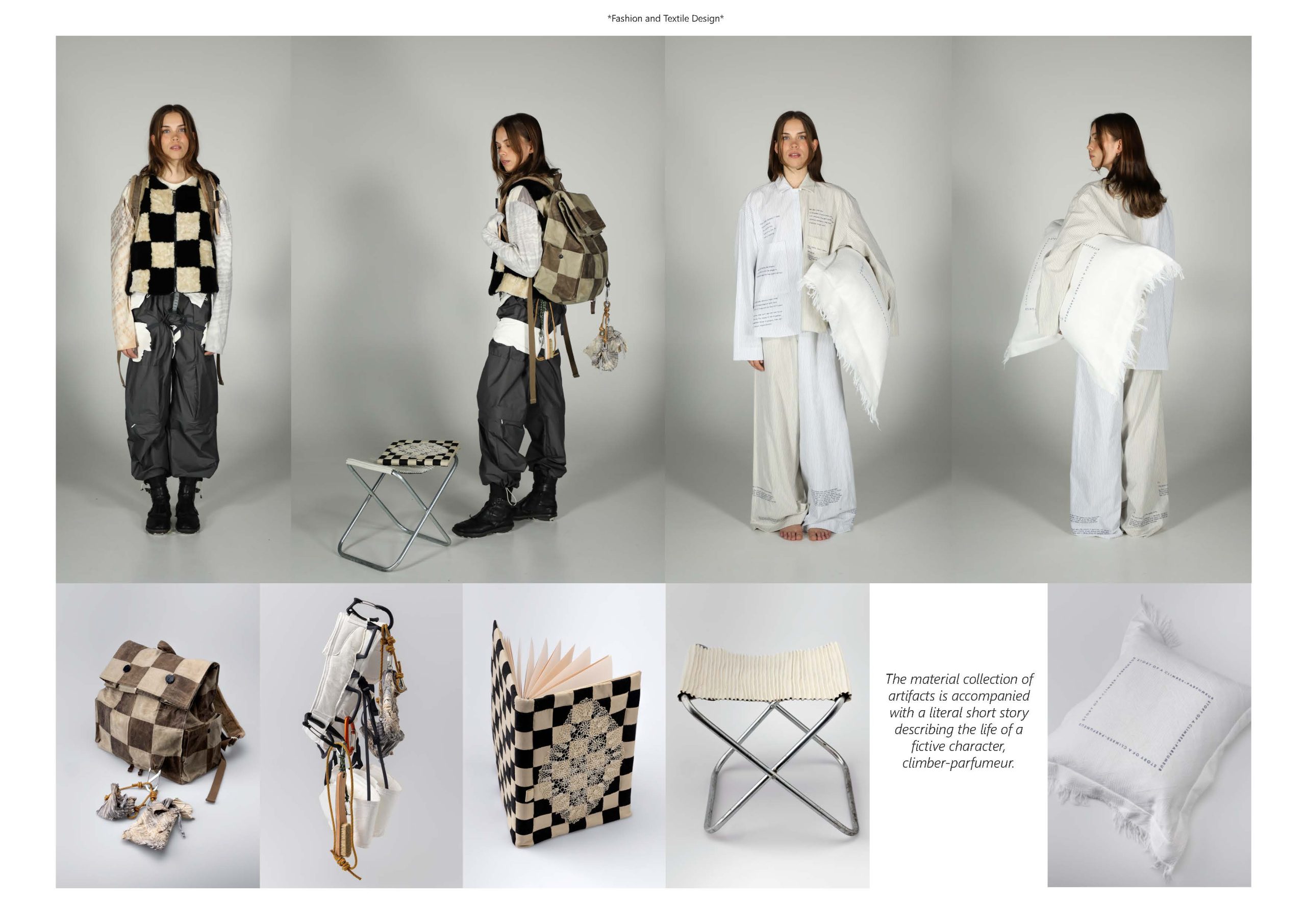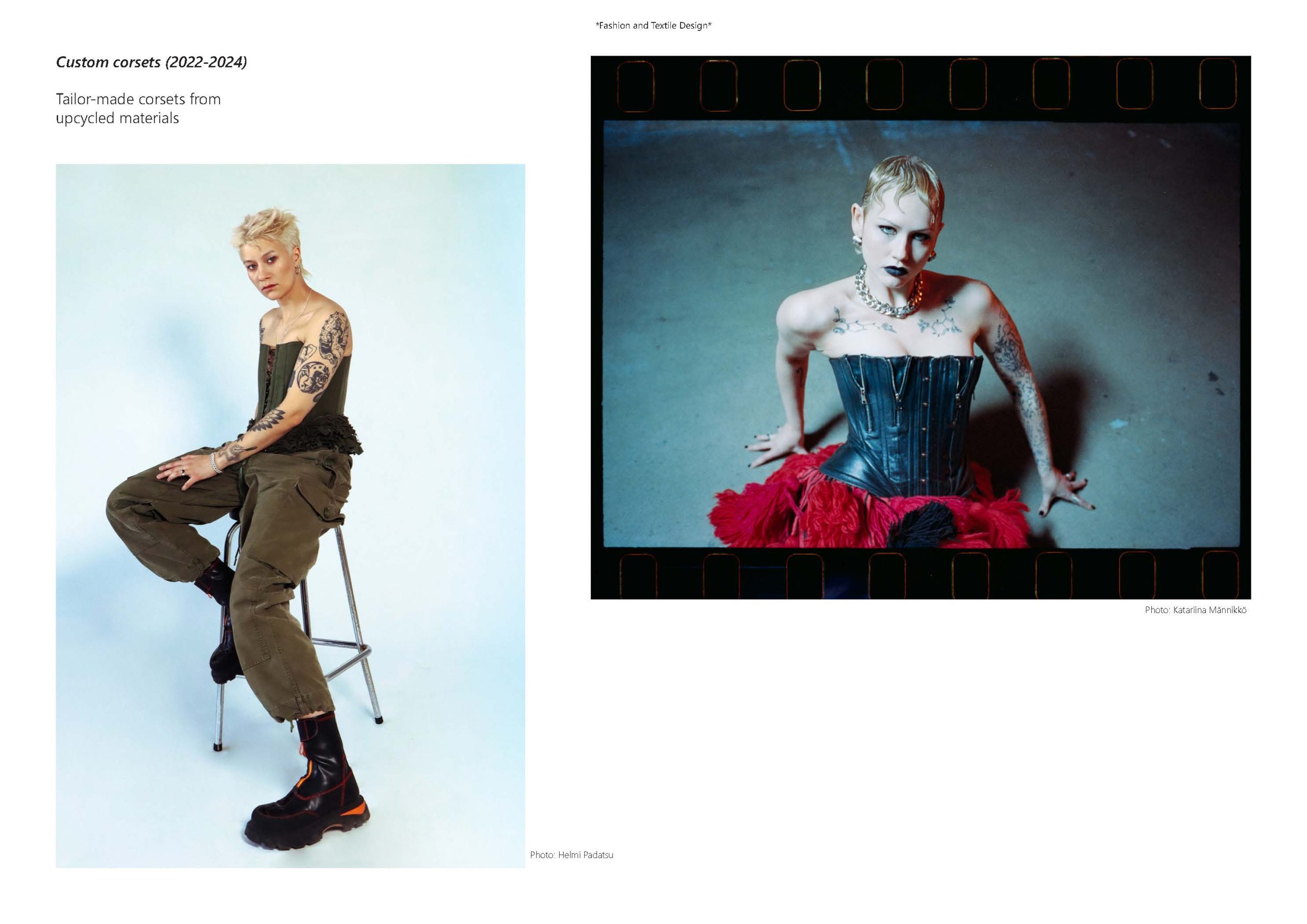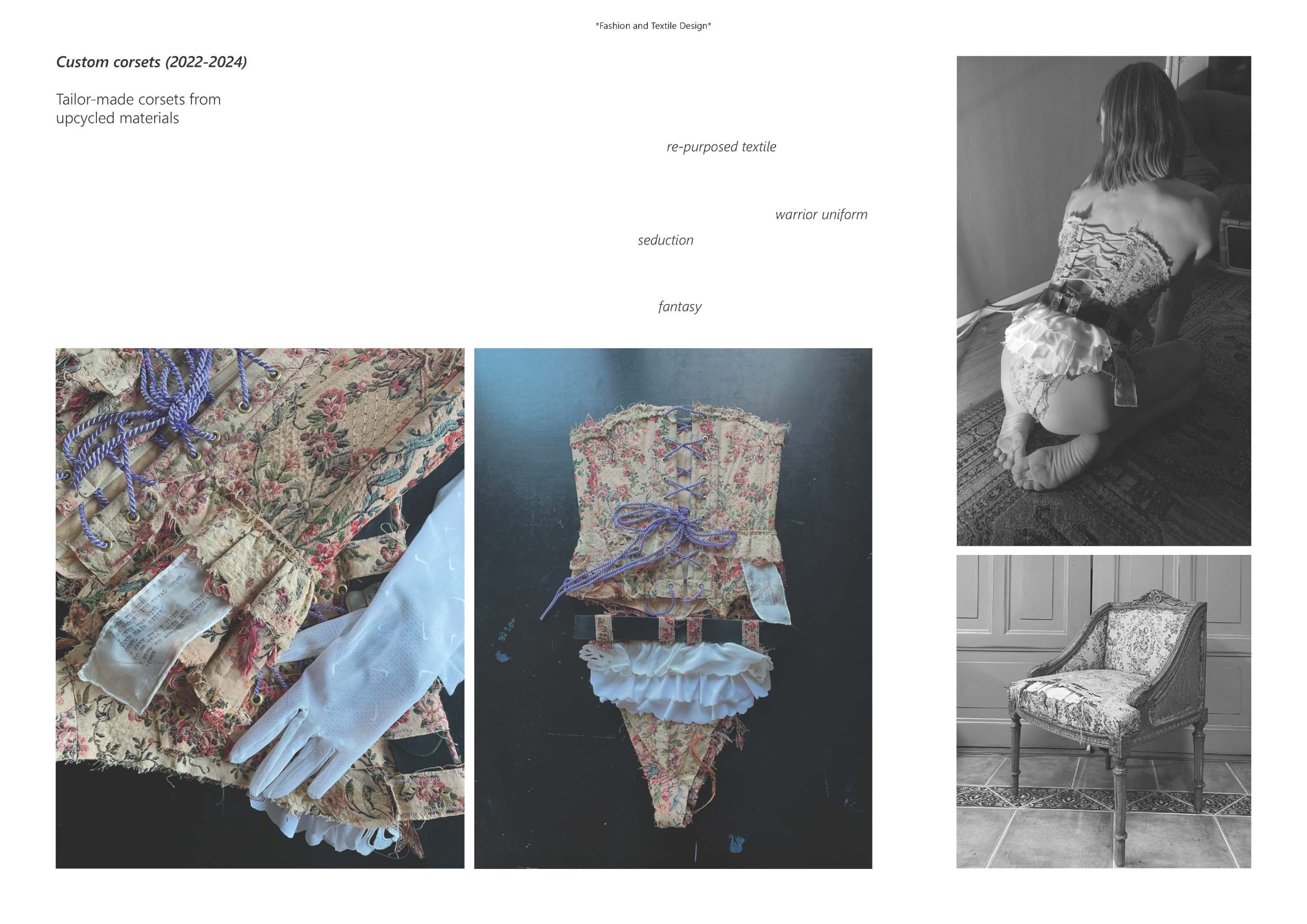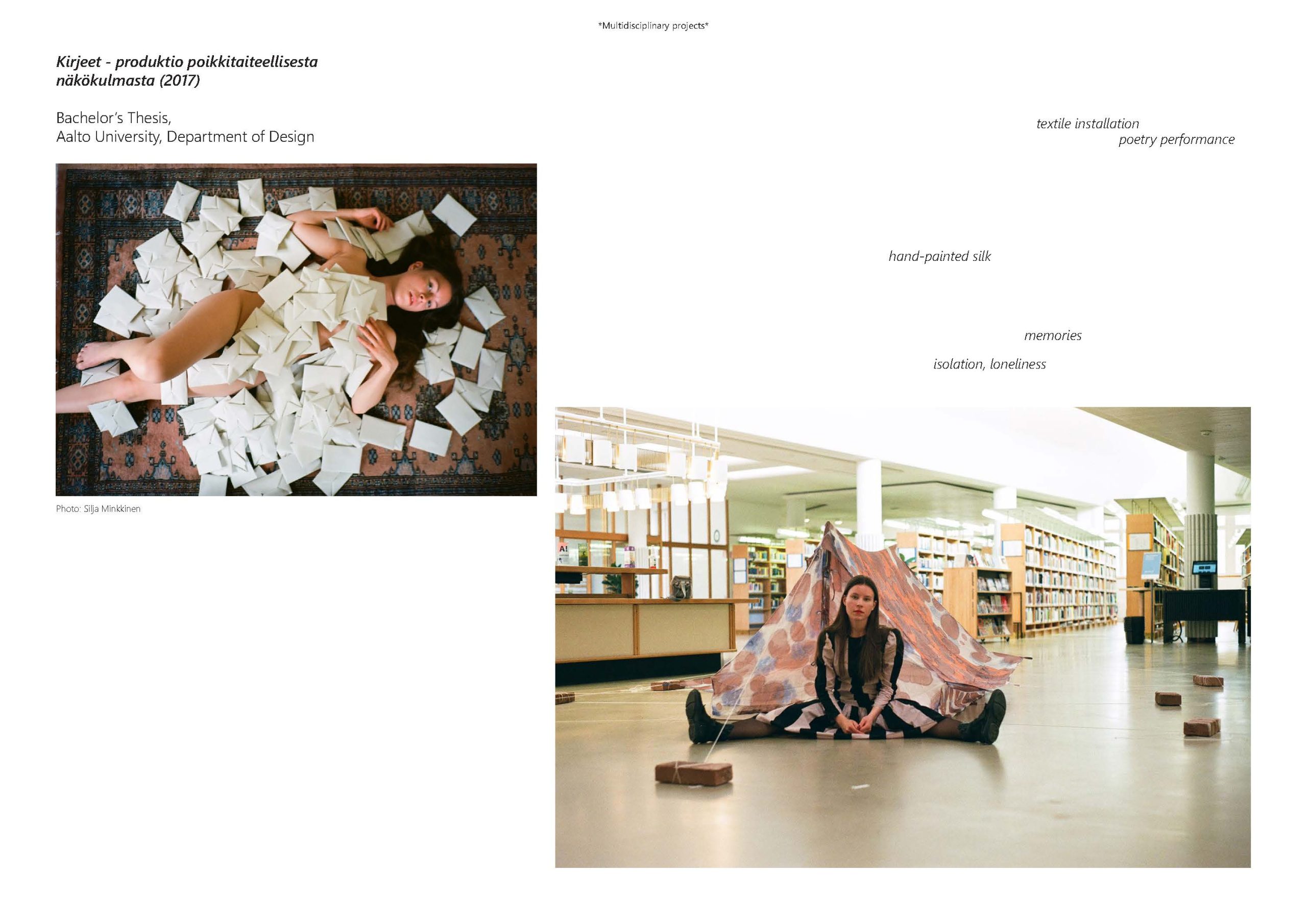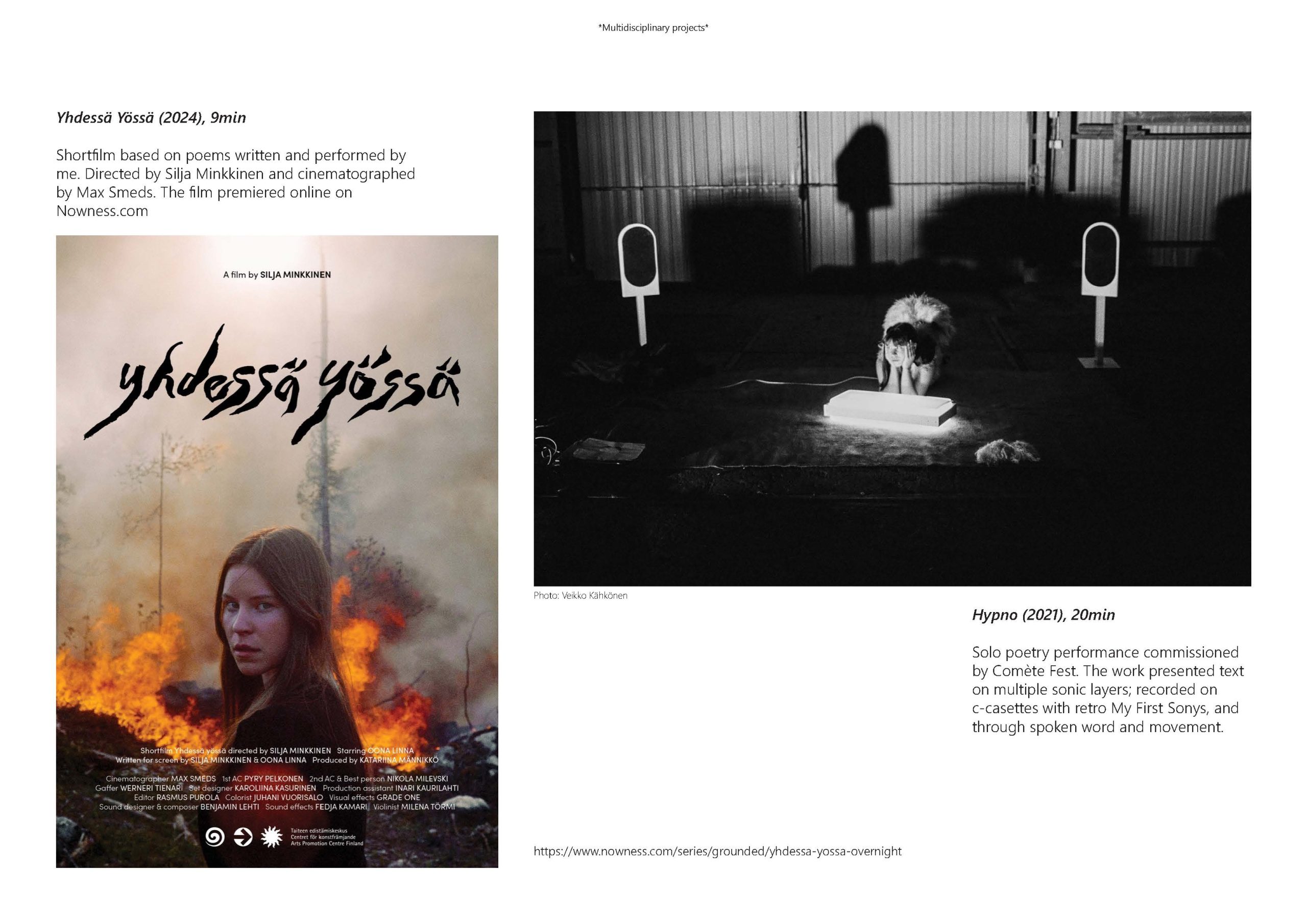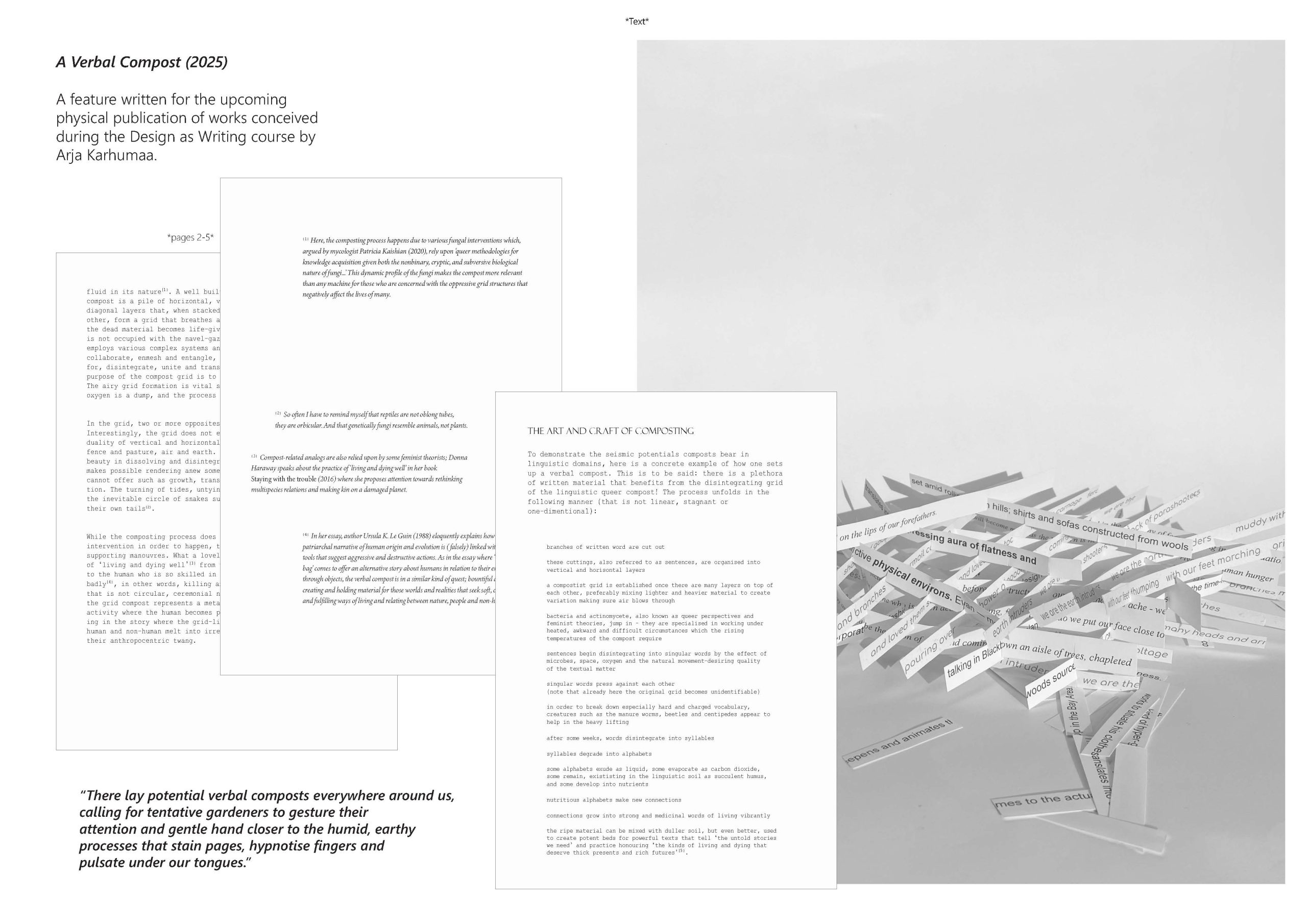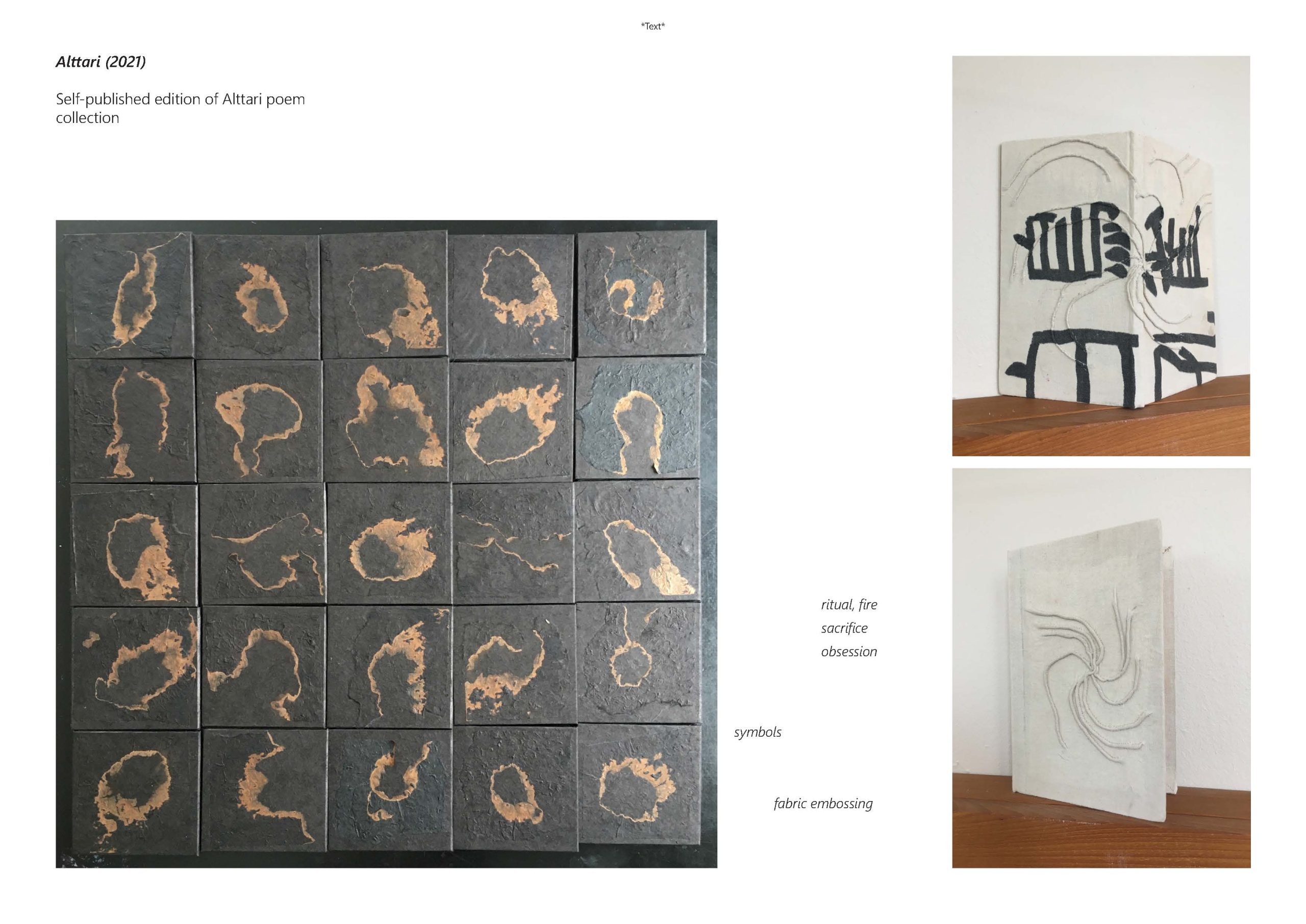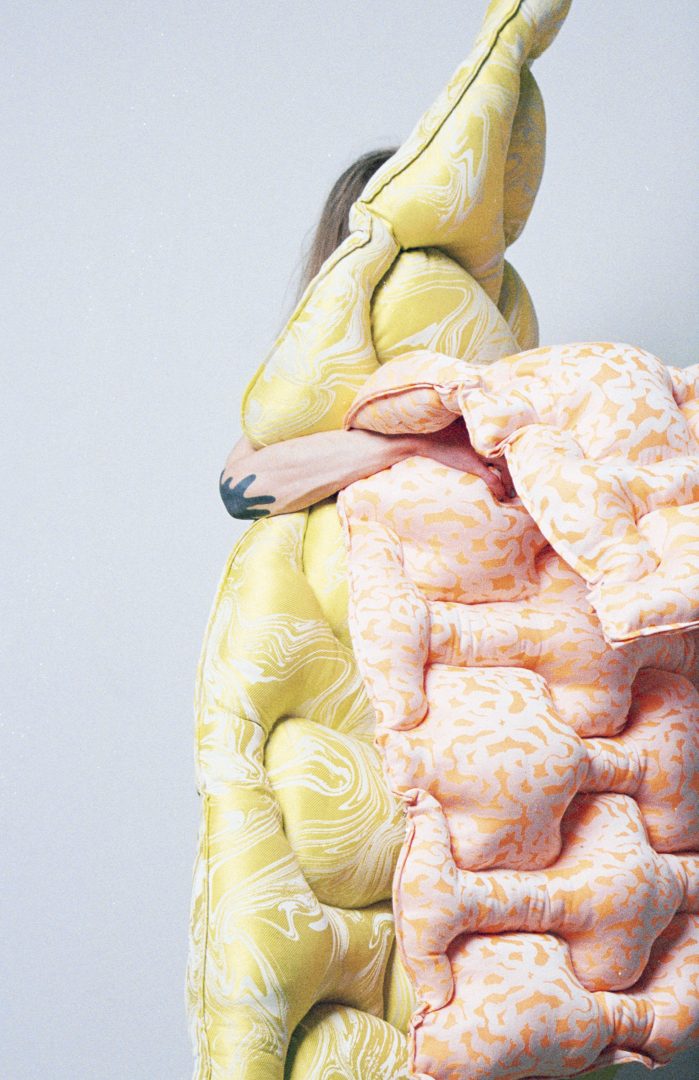Oona Linna
(MA)

Story of a climber-parfumeur
“These are not design issues, matters of style and proportion.
They are issues of rhetorical force.”
-Johanna Drucker
This work employs creative writing and slow techniques in materialising an alternative fashion narrative. How does text inhabit the body? Through where does theory leak to textile surfaces? In this literal story, a character called ‘climber-parfumeur’ lives in close connection with nature, and has a practice of climbing and making fragrance from ingredients found in high altitudes and the forest below. From here, a material garment story emerges, and design issues become issues of rhetorical force.
SUPPORT
Camu Oy
COLLABORATION
Photography: Silja Minkkinen
Crew: Ulla Minkkinen, Ida Stenros, Vilma Laaksonen
ADVISORS
Maarit Aakko, Julia Valle Noronha
SUPERVISOR
Julia Valle Noronha
(IG)
@ nokipantter
Text is capacious in criticising and escaping that which is dominant. Oona Linna’s MA thesis project strives to rewrite the common fashion narrative, challenging the vocabulary and rhetoric often associated with the linguistic manifestation of fashion. The alternative story she proposes is told through a fictional character called a climber-parfumeur.
The roots of this narrative are based in Linna’s own climbing background and infatuation with the world of fragrance and olfactory art. The character lives in close connection with nature and has a practice of climbing and crafting scents from ingredients found at high altitudes and the forest below. “The literal story is designed to accompany the material products inspired by this character. Ideally, reading the text unleashes the full potential of the garments,” Linna explains.
Linna’s creative process revolves around writing and garment design through a material-based approach. “I have sought ways in which text is capable of inhabiting textile and the body—even further than being merely an inspiration or description. I love how attention to language subverts the emphasis on aesthetic and style out of the way of conceptual emphasis,” she describes. The philosophy behind the work echoes the words of Johanna Drucker: “These are not design issues, matters of style and proportion. They are issues of rhetorical force” (2023, p. 4).
As main techniques, she has used patchwork, natural dyes, embroidery, and upcycling. “My work escapes spouting stagnate answers to fashion’s ills but exercises active thrusts in cooking salvific verbal and material stories that ramify into the world’s tissue as feelings of reverence for artisanal and slow fashion practices, and nature, where everything comes from.”
Reference: Drucker, J. (2023). Diagrammatic writing. Set Margins’
